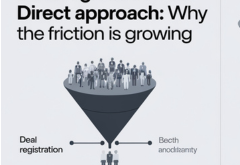According to a recent survey conducted by Gartner, Inc., the number of technology buyers expressing regret over their “as-a-service” agreements has increased by 6% since 2020, reaching 60%. The survey, conducted between February and March 2023, involved 1,503 respondents from organizations with annual revenue of at least $50 million from Western Europe, North America, and Asia/Pacific. The findings shed light on the challenges technology buyers face when purchasing decisions in the B2B space.
Hank Barnes, Distinguished VP Analyst at Gartner, acknowledged that regret has been a persistent issue in enterprise technology purchases. He raised the question of whether negative attitudes are the default for B2B technology buyers. The survey highlighted that negative attitudes are primarily influenced by frustrating buying experiences, poor communication, and the overwhelming number of options available. These factors contribute to longer buying cycles and conflicting objectives within the buying team, making expansion opportunities more challenging to pursue.
The survey revealed that technology buyers prefer minimal interactions with sales teams. A staggering 95% of respondents indicated their preference for a fully digital/online experience when expanding their technology purchases.
To address the growing pessimism and regret among technology buyers, Gartner suggests three actions for product leaders during deal negotiations:
- Enable customer-facing teams to identify signs of regret among accounts. This includes recognizing buyers who wish to revisit decisions, conflicts within the buying team, and a lack of awareness regarding the necessary steps to complete the purchase.
- Expand buyer enablement content to instill buying confidence. Provide guidance to buyers on effective decision-making processes, reducing conflict and delays.
- Embrace digitalization by introducing tools like digital checklists and shared workspaces. These enable buyers to navigate the purchasing process more effectively and collaborate on building business cases.
Barnes emphasizes that addressing these pessimism issues requires collaboration between providers and customers. By doing so, product leaders can positively impact their customers and the market in the long term.
 Latest Technology News Today – Get Latest Information Technology Updates and Services Latest Technology News Today – Get Latest Information Technology Updates and Services
Latest Technology News Today – Get Latest Information Technology Updates and Services Latest Technology News Today – Get Latest Information Technology Updates and Services 









